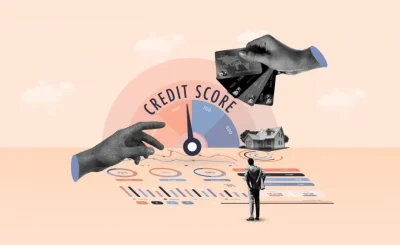You’ve poured your soul into your work. That painting, that sculpture, that rare collectible—it’s not just an object. It’s a piece of your legacy, a store of value that’s currently, well, just sitting there. What if you could access that value without having to sell? What if your collection could fund your next big project?
That’s the powerful, and often overlooked, world of art and collectible asset financing. It’s a financial tool that’s moving from the hushed halls of elite auction houses to the studios of independent creators. Let’s pull back the curtain.
What Exactly Is Collectible Asset Financing? (It’s Not a Sale)
In simple terms, it’s using your high-value art or collectibles as collateral for a loan. You hand over the physical asset for safekeeping with a specialized lender, they lend you a percentage of its appraised value, and you get a lump sum of cash. Once you repay the loan, your masterpiece comes back home.
Think of it like a mortgage, but for your Picasso or your prized comic book collection. The key difference from a traditional gallery sale? You maintain ownership. You’re not saying goodbye; you’re just leveraging your asset’s dormant financial power.
Why Would a Creator Even Consider This?
Sure, the classic reason is liquidity—getting cash fast. But for creators, the applications are far more nuanced and, honestly, game-changing.
Fuel Your Next Big Project
Staring down the costs of a new studio, a large-scale installation, or a limited production run? Instead of draining your savings or dealing with the slow grind of grant applications, your existing body of work can become your patron. It’s a way to self-fund your creative expansion without external interference.
Smooth Out the Feast-or-Famine Cycle
Let’s be real. Creative income is famously irregular. This kind of financing can act as a bridge during slow periods, covering living expenses and overhead so you can focus on creating your next hit instead of panicking about rent.
Seize Opportunities Without Desperation
That once-in-a-lifetime chance to acquire a key piece for your collection pops up. Or a prime spot in an international art fair becomes available. With asset-backed lending, you can act quickly. You avoid the “fire sale” of having to offload another piece at a discount just to raise capital in a hurry.
The Nuts and Bolts: How It Actually Works
Okay, so how do you navigate this process? It’s not as opaque as it seems. Here’s a typical flow.
Step 1: Valuation is Everything
First, you need to know what your asset is worth. Lenders will require a professional appraisal from a recognized expert. This isn’t the time for sentimental value—it’s about fair market value. Provenance, condition, artist reputation, and recent sales of comparable works all play a huge role.
Step 2: Finding the Right Lender
You won’t walk into your local bank branch for this. The landscape includes specialized asset-backed lenders, certain private banks, and a growing number of fintech platforms focused on art-secured lending. Do your homework. Look for transparency in fees and a track record with assets similar to yours.
Step 3: Loan-to-Value and Terms
Lenders typically won’t lend you 100% of the appraised value. The loan-to-value (LTV) ratio is usually between 30% and 60%. This buffer protects them—and you—from market fluctuations.
Terms can vary widely. You might be looking at:
- Short-term loans (6-12 months): Perfect for bridging a gap or funding a specific, quick project.
- Medium-term loans (1-5 years): Good for more substantial business investments.
- Interest rates are generally higher than a home mortgage but often more favorable than unsecured personal loans or credit cards.
A Quick Glance at the Pros and Cons
| Advantages | Considerations |
| Access capital without selling your work | Your asset is held by the lender (in a secure, climate-controlled facility) |
| Often a faster process than traditional loans | Appraisal and due diligence fees can add up |
| Funds can be used for any purpose—total flexibility | You’re taking on debt, so a repayment plan is crucial |
| Potential tax advantages (interest may be deductible) | The art market can be volatile, affecting LTV |
Is Your Work a Good Fit for This?
Not every piece in your studio will qualify. Lenders are looking for assets that are relatively easy to value and, if necessary, sell. They tend to favor:
- Works by artists with an established market and auction history.
- Blue-chip art and modern masters (the easiest to finance).
- High-end collectibles like rare watches, fine wine, classic cars, or top-tier jewelry.
- Even emerging artists can qualify if there’s a clear and growing demand for their work.
The Big Picture: Rethinking Your Creative Equity
Ultimately, this is about a shift in mindset. For too long, many creators have seen their work as either a passion project or a simple commodity to be sold. Art and collectible financing introduces a third, powerful option: your work as strategic capital.
It acknowledges that the value you create isn’t just in the final sale. It’s in the cultural equity, the reputation, and the tangible asset you’ve built. It’s a tool that allows you to be the CEO of your creative enterprise, making strategic financial decisions to fuel your long-term vision.
So, look around your studio. That piece you can’t bear to part with? It might just hold the key to your next chapter. It’s not just art on a wall; it’s potential energy, waiting to be unlocked.










